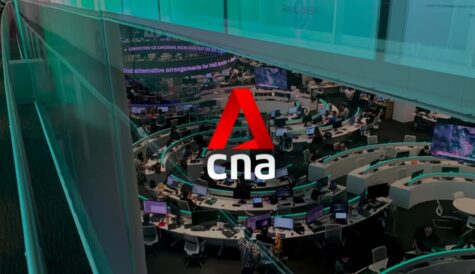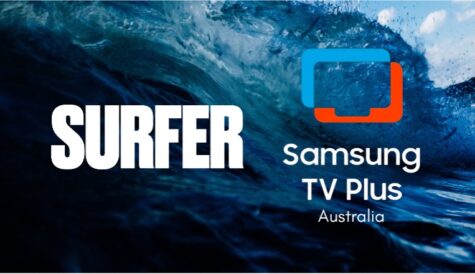
After more than 40 years of operation, DTVE is closing its doors and our website will no longer be updated daily. Thank you for all of your support.
Business model behaviour – new revenue streams for channels
Channel operators are making efforts to diversify revenue streams by introducing separate advertising windows, licensing and merchandising and by introducing non-linear pay streams.
Pay TV’s dual revenue stream model faces a number of challenges that could have a severe adverse impact on it, according to Bill Roedy, former chairman and CEO, MTV International and author of What Makes Business Rock. Interviewed by BBC journalist Raymond Snoddy at the CTAM Europe EuroSummit in Vienna recently, Roedy said that the growth in à la carte, on-demand and OTT viewing could have an an adverse impact on pay TV subscription revenues. The bundling model, which had delivered solid revenue streams to pay TV channel providers, was now facing considerable pressure, he said. “Bundling inherently is a negative consumer proposition, but it’s worked for the industry,” said Roedy.
The advertising business of pay channels is also under threat from disruptive technologies, Roedy told EuroSummit attendees. “Advertising on TV isn’t hitting the target audience. Agencies are always the last to respond. The smart box now gives you complete information and there will be a lot more scrutiny,” he said, while the use of data from intelligent devices could threaten the advertising business model. Roedy said DVRs could also threaten the advertising business, in this case in part because no mechanism was yet in place to provide accurate viewing numbers that broadcasters could monetise with advertisers.
Under pressure
Nevertheless, said Roedy, cable had strong advantages and would continue to prosper if it adapted to change. There was room to grow in Europe, he said, where penetration and ARPUs were much lower than in the US. Roedy said he believed OTT services such as Netflix could struggle as the prices of content accessible to them rose. He said Netflix would find it difficult to compete with established pay TV content businesses. “OTT services are getting into original programming but it’s not easy to produce hits,” he said.
Roedy’s EuroSummit comments serve as a useful context-setting exercise for any look at moves by pay TV channel providers to diversify their revenue models. While the idea that over-the-top providers such as Netflix could bring down the whole pay TV model would seem to be premature, traditional models are nevertheless likely to be under more pressure as time goes on.
However, for many pay TV channels, revenue diversification is at a relatively early stage. Indeed many rely more or less exclusively on subscription revenues and have yet to build a viable advertising sales business.
Fox International Channels is predominantly focused on the production of pay TV channels, although it also operates free-to-air channels in the Middle East. According to Jesús Perezagua, president Fox International Channels Europe and Africa, the principal difference between the two is the finance model. “While the free-to-air channels exclusively depend on advertising, our pay TV channels have the additional affiliate revenue stream,” he says. “This is the classic model for pay TV that we have followed in Europe from our first launch 15 years ago and we are satisfied with it.”
The operator has introduced a range of pay TV channels and feeds across Europe over the years, “with excellent results in terms of ratings and revenues,” says Perezagua. Although FIC recently launched a free-to-air channel in Finland, a rebrand of the Suomi TV channel it acquired to Fox Finland, Perezagua says pay TV will continue to define its business in Europe.
FIC is, however, seeking alternative revnue streams, growing its digital business and increasing the commercial activities of its online advertising unit, .Fox Networks, which offers video and display solutions for advertisers. “We are able to offer an efficient presence in multiple windows to advertisers, including web and mobile, aside from TV, which helps to improve campaign reach and results,” says Perezagua.
Kids channel KidsCo is also currently reliant on affiliate subscriber revenues, but managing director Hendrik McDermott says that it is actively looking to diversify. “It’s a single revenue stream business at the moment. We are absolutely looking to diversify revenue. The first one is advertising,” he says. “There are challenges – we are in the kids business which is heavily regulated. It is also difficult to sell pan-regional ads.The model is for local insertion, which tends to work on larger platforms.” He cites Australia, Poland and South Africa as possible markets. “We get positive feedback from affiliates on parents’ views and that will govern the type of ads we are willing to tolerate. We also have to think about the volume of advertising. We are not a ‘toy factory’ type of channel,” he says.
Licensing and merchandising offers less in the way of opportunities. McDermott says KidsCo is “very much a TV channel” with relatively little in the way of intellectual property rights to exploit outside of that. However he is looking to expand the amount of original programming it airs. “We have commissioned some new content that will be on air next year, but we are not jumping in headfirst,” he says. The channel’s new structure, with ownership now split between majority shareholder NBC Universal and Corus Entertainment, gives KidsCo two strong corporate parents that allows it to commission content that can be exploited across different platforms, he says.
Beyond advertising
There are, of course, possible ways to diversify revenue beyond traditional advertising. For independent movies service Sundance Channel, the bulk of revenues currently come from traditional affiliate fees, but the company has attracted some additional revenue from subscription video-on-demand or even transactional VOD. It is relatively easier to secure day-and-date VOD rights for independent films than for major Hollywood blockbusters. By securing VOD alongside linear channel rights, AMC/Sundance Channel can help service provider partners by expanding the offering associated with the channel. However, cautions, Bruce Tuchman, president, AMC/Sundance Channel Global, it is still very early days for VOD in many markets. “We are just beginning to experiment with it. Not everyone is doing VOD. Not everyone has the technology implemented,” says Tuchman.
As far as advertising sales is concerned, Tuchman says the investment required to develop a local ad business means that the opportunity has to be weighed carefully. “We have to build up distribution and we are making progress. We are growing our subscriber base and we are approaching levels in some markets where we could have an advertising business,” he says. Nevertheless, says Tuchman, Sundance is currently “just scratching the surface” in terms of its subscriber business. “The subscriber business is growing at a nice pace,” he says. “We’re trying to build a real solid business and that takes time and requires investment. People are feeling good about the progress we’ve made.” There is therefore relatively little pressure to develop diversified revenues from new businesses such as advertising.
Tuchman says that AMC/Sundance Channel does plan to extend its localisation effort, while weighing “the cost of investment versus expected return – and the sheer time and diversion of attention” that this involves. However, he adds: “There is no market at the moment where we’d plunge into advertising sales. The key now is to grow the channel, patiently invest and track our expected return. Ad sales is not something we’ll look at in the immediate time-frame. Right now it’s about expanding and building these channels.”
While the majority of international channels primarily target pay TV revenues, some have looked instead to the free-to-air market, while news broadcaster France 24 is one of a number of services that are publically funded. France 24’s strategy has always been to remain free of charge via satellite and to be positioned in operator’s basic packages wherever possible. But Eric Cremer, France 24’s vice-president of distribution says there are certain situations when expanding into pay TV makes sense: “We will consider direct revenue generation for France 24 if we think we will get more subscription revenues for the channel via à la carte or package options.” Cremer says there is potential for generating pay TV revenues from its French and Arabic feeds, particularly in Asia and the Americas. The broadcaster recently launched its French-language channel in Cambodia on the country’s One TV DTT platform, for which it charges €2.29 per month.
As France 24 is publically funded, it is susceptible to budget cuts and restrictions. The broadcaster is therefore developing alternative revenue sources, says Cremer, by, for example, licensing its content. It has also seen some success in offering advertising windows in some territories. “We have more requests from cable and satellite operators who want to operate local sales, but it’s a very interesting way of increasing revenues from audiences,” says Cremer.
Regardless of revenue streams, Cremer emphasises that France 24 wants to be in as many homes globally as possible. “From a purely distribution perspective, regardless of the model, whether free-to-air or pay TV, France 24’s priority is to be available on all major networks used by households to receive their favourite TV channel.
By contrast, sports and music broadcaster Trace has its sights set firmly on the pay TV market, with no plans to target the free-to-air space. About half of the company’s revenues come from subscriptions, with the rest split between ad revenues and ancillary business. “The pay TV market is becoming increasingly competitive, but given our exceptional value for money proposition, Trace is extremely well-placed to continue its rapid growth,” says CEO Olivier Laouchez. “We are a lean but efficient business, meaning we can be very flexible. We are constantly looking for partners for our pay TV activities as well as for our diversification activities.”
Female-focused
Trace has signed MVNO deals with various mobile operators, including with African telco NTN, and Laouchez says it is planning more partnerships around the world. The company has also recently launched a prepaid payment card with Mastercard in France called Black Carte Trace. “It’s already live in France and has received a very positive response from the market amongst our core audience,” says Laouchez.
Like other international channel providers, Discovery Networks International has sought to develop a dual revenue stream model. Its launch and distribution push of female-focused channels TLC, Discovery Real Time and ID in international markets has been in part about developing a stronger base for advertisers. According to Discovery Networks International president Mark Hollinger, this strategy has largely worked.
“The good news for us is that the revenue mix in international is becoming more balanced over time,” says Hollinger. “We started out as a fully affiliate revenue business. Over time you hope to build the advertising business, but it happens at a different pace in different markets. The affiliate side is still bigger than advertising revenue but advertising revenue is still growing.”
Hollinger believes there is still a lot of room for growth on the advertising side, where pay TV channels remain underrepresented in terms of the share of the ad sales pie that their audience reach should justify. “There is a lot of upside on the ad side there are a lot of markets where pay TV is underrepresented in the advertising pie relative to its audience size. We want to grow that and get our fair share of the pie,” he says. While the current macroeconomic environment has not been particularly conducive to advertising growth, Hollinger says that Discovery’s diversified portfolio of channels and large affiliate base has helped.
In territories where the pay TV business is underdeveloped, Discovery has also branched out into the free-to-air market, launching DMAX in Germany and building a free-to-air business in the UK, Italy and Spain. Italy is now the most successful free-to-air market for the channel provider, with both Real Time and now DMAX available and winning audience share. “Overall Italian TV ratings have done well. Real Time is number seven or eight and DMAX is now in the top 25,” says Hollinger.
Other opportunities to make money – including over-the-top delivery and subscription or transactional video-on-demand – will largely be determined on a territory-by-territory basis.
“We have done a couple of big deals in the US with Netflix and Amazon,” says Hollinger. “We judged that the market dynamics in the US meant that was the right thing to do. It’s a mature pay TV market. Those were great deals but we have been more cautious internationally. We don’t want to do anything to damage the growth potential of pay TV.”
In international markets Discovery has therefore focused on extending digital distribution deals to existing pay TV partners.



